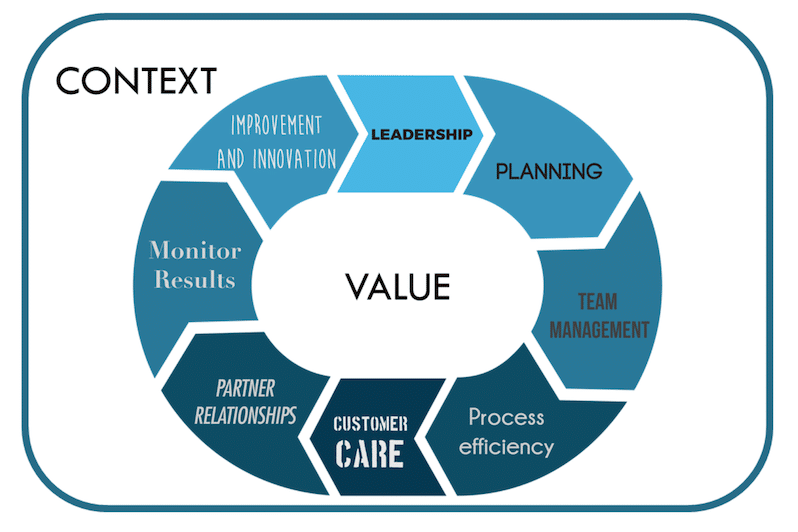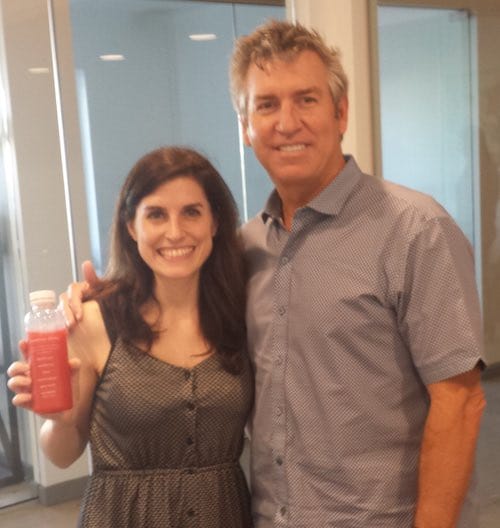SMED your SME journey applying Deming principles – guest post by Luciana Paulise
How to build succesful business right the first time
For more than 10 years now I have been helping people to develop their own Small and Medium-sized Enterprises (SME).
As a graduate with a degree in business, at first, I helped students build business plans. I realized I was quite good at telling them how to create an organized business and motivating them to make it real, so I decided I wanted to actually use these skills to build a real business for myself. My business would be to advise SME on how to be sustainable in the long term applying quality principles right from the very beginning. In order to have a standardized offer, I designed a model: the SME deck.
In 2014, I applied for and received a grant from The W. Edwards Deming Institute [The Institute makes 5 travel grants available each year to study the Deming Collection at the Library of Congress. Contact the Institute if you are interested in applying for a grant].
My plan was to continue to improve the model and apply it to new business and also to small and medium size ones. I was looking for a quality methodology to frame my model, but I couldn’t find one I was satisfied with until I discovered Deming Institute website. I knew about Deming, I had read part of Out of the Crisis during my university classes, so I started to think he was exactly what I was looking for.
I got deeper into his teachings and his way of thinking and realized the 14 principles were a perfect fit into my theory, and so the full system of profound knowledge. I applied for the Deming grant to learn more about him and be able to implement his teachings more accurately.
Fortunately, I received the grant and was able to travel to the US to the study Deming’s papers at the Library of Congress in Washington DC. I was also invited to attend to the Deming Institute Annual Fall conference in Los Angeles.
Context
In 2014, as in previous years, the dominant reason for discontinuation of a venture in Latin America, Africa, Europe, Asia and Oceania was that the business was not profitable, as per the Global Entrepreneurship Monitor 2014 Global report. In North America, personal reasons are the most common reason and non-profitability was the second most common reason. The most common reasons provided for why the business was not profitable were: starting a business venture which is not well prepared, bad management of the venture, or extremely strong influences of market distortions.
That is because owners of small and medium size businesses focus mostly on the product and how to sell it. They are experts on something but they don’t care much about the structure of the company, they lack the knowledge about planning, accounting or even human resources. If they are too good at what they do, they grow so fast that they don’t have time to look at their processes even if they repeat the same mistakes again and again. If they are not good enough, they don’t have enough money to analyze what is going wrong. The result is that only a small portion of startups survive in the long term.
Some entrepreneurs don’t even get to the point of creating their own business. Many of the clients I worked with had had developed the idea for years, but they were reluctant to quit their Jobs, or were afraid of failing.
In any case, this is an indicator of wasted resources, and wasted dreams.
Even myself, by 2013 I was still working for a Company. Even though I had been working with entrepreneurs since 2005, and I had created my own Company in 2011, I was still afraid of being totally free to work on my dream. But by the end of 2013, I decided that I should teach by example, I had to be successful myself in my own business, and test my own theory in order to be convincing, so I did it. I quit my job, and here I am, working only on what I am good at: business quality management.
The model
Why SMED? Because basically my business plan model helps an entrepreneur to apply SMED (the Japanese Single-Minute exchange of Dies Tool that Toyota engineers developed) to their “conversion” from employees to bosses. I summarized and organized all the main aspects they should consider and learn about before opening their business.
Studying several business plans models, I developed a 10 dimensions model, the SME deck, in order to showcase a package that was clear, affordable and of course, short enough for anxious entrepreneurs. The 10 areas are: context (external), leadership, planning, team management, process efficiency, customer care, partner management, results, improvement & innovation (the 8 internal dimensions), and finally value, a result of the interaction of the context and the internal settings.
These areas are similar to the ones proposed by the new ISO 9001 standard, or the Malcolm Baldrige National Award, but these tend not to provide or suggest tools, but to provide a framework to evaluate performance, and assess where improvements or innovation are most needed.
The SME deck is more practice-based, including steps and tools to apply right away.

Deming Insitute Grant and Visiting CEOs in California
The research at the Library of Congress in Washington DC was very helpful. I was able to interview some business owners as part of the research in Los Angeles and Silicon Valley, California (the annual Deming Institute conference was in Los Angeles in 2014):
- Bill Bellows, Associate Fellow and Lead at InThinking Network Aerojet Rocketdyne
- Steve Schulze, CEO Nekter Juice bar
- Stephen Gordon CEO Opus Bank
- Hernan Botbol, CEO Taringa
- Peter Stonefield, President and founder Stonefield learning Group
- Patricia Alvarez, CEO Gemdo Cosmetics
- Mariano Suarez-Battan, CEO Murally
The conference and the whole trip to California was so exciting and energizing. With all the knowledge I acquired, in the Deming archives at the Library of Congress and the annual conference, together with the information and perspectives I got from the interviewees, I was able to complete the model.
Now the model details the steps and tools required to go through each of the dimensions. With it, entrepreneurs get a flavor of all the things they need to take into account to a build a sustainable business, and once their business is on its way, they can get deeper into each of the steps and tools to solve performance issues and continue improving.
Continued in: Applying a Model for Small Business Continual Improvement.

Luciana Paulise is a business consultant and founder of Biztorming Training & Consulting. She holds a Master in Business Administration and is also a Quality Engineer certified by the American Society of Quality (ASQ). She has participated as an examiner for the National Quality Award in Argentina. Participates in weekly meetings with the Deming Collaboration Group. She is also a columnist for Somos PYMES (Argentina) Destino Negocio (Spain), Influential Voice for the ASQ (US) and for SimpliLearn (India). Speaker and author.
In 2014, Luciana received a grant from the Deming Institute to develop the SME (small and medium size enterprise) deck based on Deming teachings.
Related: A tribute to Deming (blog post on Luciana’s blog) – Deming’s Stage 0: By What Method? – People Copy Examples and Wonder Why They Don’t Succeed


